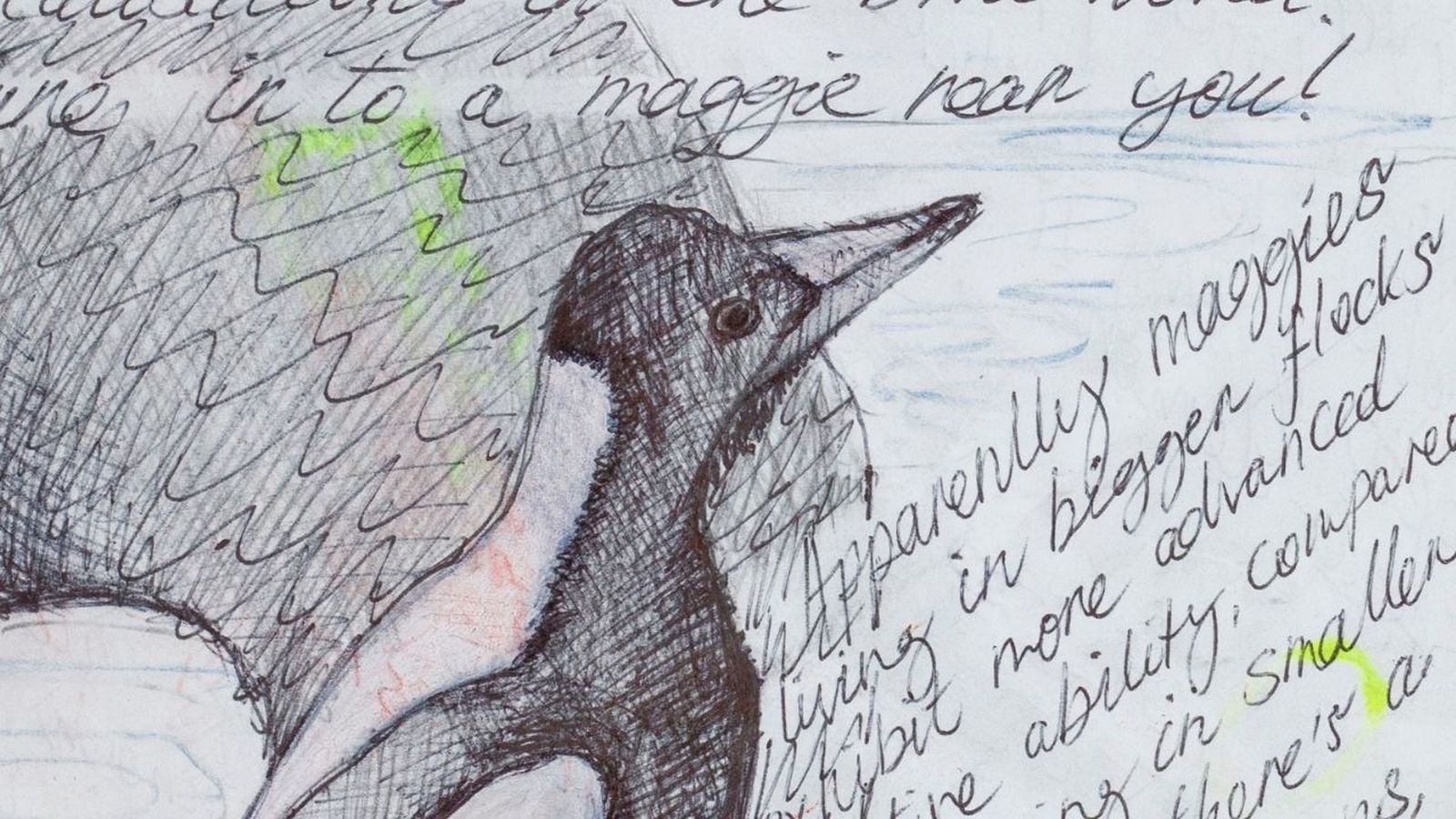Alexi Freeman

Alexi Freeman
Designer Alexi Freeman lives in Melbourne. Alexi found the pandemic ‘legitimately terrifying’ doing everything he could to avoid unnecessary contact with other people to stay safe. He says this was made a little easier for him in a self-imposed lockdown to write a postgraduate thesis. His journal represents both his thoughts on the experience of isolation and a taste of his research into bio-design. Text and drawings of the urban birdlife he observes through his window provide an intimate insight to this designer’s experience.
“An analogue clock perches behind me subordinately holding rhythm. The eucalypt across the way sways in arrhythmic dialogue. A cacophony of finely feathered black cockatoo squawks intermingle with the harmonics on a child’s tricycle bell tolling, punctuated by the intermittent screeching of a tram as it migrates the sharpish dogleg out of view.”
We asked Alexi three questions about his experience of isolation, completing this journal and his hope for the future. These are his responses:
Describe the experience of the period of isolation for you.
The genesis of the global pandemic was legitimately terrifying. Even as someone not considered to be in a high-risk demographic, I avoided contact with my own species at all costs. If I did have to go out, I would virtually walk out in front of oncoming traffic rather than risk inhaling the second-hand vapour of any random human on the footpath. I ate my cupboards and home veggie garden dry of edibles before potentially risking life and limb by venturing out to the market to buy groceries and then washed everything ferociously before consuming!
Mercifully, it soon became apparent that my local village wasn’t aggregating the numbers of cases observed in so many other parts of the world and the anxiety eased, but hasn’t subsided completely. As evidenced by the second-waves here and elsewhere, perhaps none of us are out of the woods just yet.
I’m also eternally grateful to be in the midst of writing a postgraduate thesis during this period, a time virtually requiring a self-imposed lockdown regardless.
What does your book represent and how did you approach the challenge?
My Iso-diary represents a snapshot of musings that have kept me sane-ish over the last five months of lockdowns. From the menagerie of amazing bird life that live around these parts, to a glimpse into some of the biodesign research that I’m currently undertaking into the potential of microbiology procedures as methods of making eco-friendly design materials. I’ve endeavoured to share what I’m fascinated in, observing and listening too, and hopefully, some of these musings will spark some iterative ideas in whomever takes the time to digest it!
What do you hope will change in Australia as a result of the pandemic?
Immensely challenging as it has been for so many of us, it’s my sincere hope the pandemic has also highlighted the importance of thinking globally and acting locally. ‘Bioregionalism’ is an inspiring term advocating the belief that human activity should be largely constrained by ecological and geographical boundaries, rather than political ones, for the wellbeing of the entire interconnected ecosystems of Earth.
Here in Naarm (Melbourne) during Stage Four Lockdowns, we’re currently required to stay within a 5km radius of our homes and for many of us, this has involved a radical shift in the way we navigate our city. But imagine all the travel-based emissions that have been saved, and could continue to be saved, if we all started consciously incorporating bioregional principles into our non-pandemic lives!
For those of us that are able to do so, ritually (as opposed to a tokenistic approach to) walking and riding places we need to go, as part of our daily cardiovascular routine would make a palpable difference to the ecologies of our cities.
I’d also love to see us focus more on local produce and local manufacturing as every time we import products there’s a significant carbon footprint attached to transporting and packaging that item. Whether it’s California Navels, Brazil nuts, Danish furniture, French Champagne or a million other thoroughly delightful products that are region specific, they all arrive with a carbon footprint, which isn’t doing our planet any favours.
yI really hope this period has highlighted that we’re blessed to be living in an amazing land that is able to grow and produce myriad products within its own geographical borders, so I’d love to see this period birth a permanent shift towards supporting local industry within bioregions to help save our beautiful planet while we still can.
Born Hobart in 1978, Alexi Freeman lives and works in Fitzroy, Melbourne, Australia. Alexi Freeman has had a 20+ year career within the Australian and international art and design industry consistently realising solo and collaborative wearable collections and creative exhibitions during this time. Alexi has exhibited and collaborated with some of Australia’s most highly esteemed cultural institutions including the National Gallery of Victoria, the National Gallery of Australia, The National Portrait Museum, The Museum of Old and New Art (MONA), Craft Victoria, Australian Design Centre and The Australian Ballet. Alexi has been interviewed extensively and has also been a regular contributor to Australian art and design magazines. While his collections have been sold extensively in Australia and internationally, he has transitioned to a more environmentally focused practice based on private commissions and arts grants in recent years.
View Alexi Freemans' journal here:
Image: Alexi Freeman, Design/ Isolate Journal (detail), 2020.
